The international protection marking (IP) class means protection against the impact of the environment to the equipment and housing. It has been established by the International Electrotechnical Commission. The IP code shows the level or degree of protection.
Figures mean various forms of environmental impact:
- The first figure means the protection against penetration of solid objects;
- The second figure means protection against penetration of liquids.
| First figure (solid matters) | Second figure (liquids) | |
| 0 | Not protected | Not protected |
| 1 | Protected against solid objects over 50mm, for instance, hands, large tools, etc. | Protected against vertically-falling water drops or condensatation. |
| 2 | Protected against solid objects over 12mm, for instance, hands, large tools, etc. | Protected against the impact of a direct water jet with the falling angle of 15⁰ from vertical. |
| 3 | Protected against solid objects over 2.5mm, for instance, wires, small tools, fingers, etc. | Protected against the impact of a direct water jet with the falling angle not exceeding 60⁰ from vertical. |
| 4 | Protected against solid objects over 1.0mm, for instance, wires, etc. | Protected against water jets falling in any direction.Limited water penetration possible. |
| 5 | Partial protection against penetration of dust. | Protected against low pressure water jets falling in any direction.Limited water penetration possible. |
| 6 | Full protection against penetration of dust. | Protected against high pressure water jets falling in any direction.Limited water penetration possible. |
| 7 | – | Protected against penetration of water when immersed at the depth of 15cm to 1m. |
| 8 | – | Fully protected against penetration of water when immersed. |


